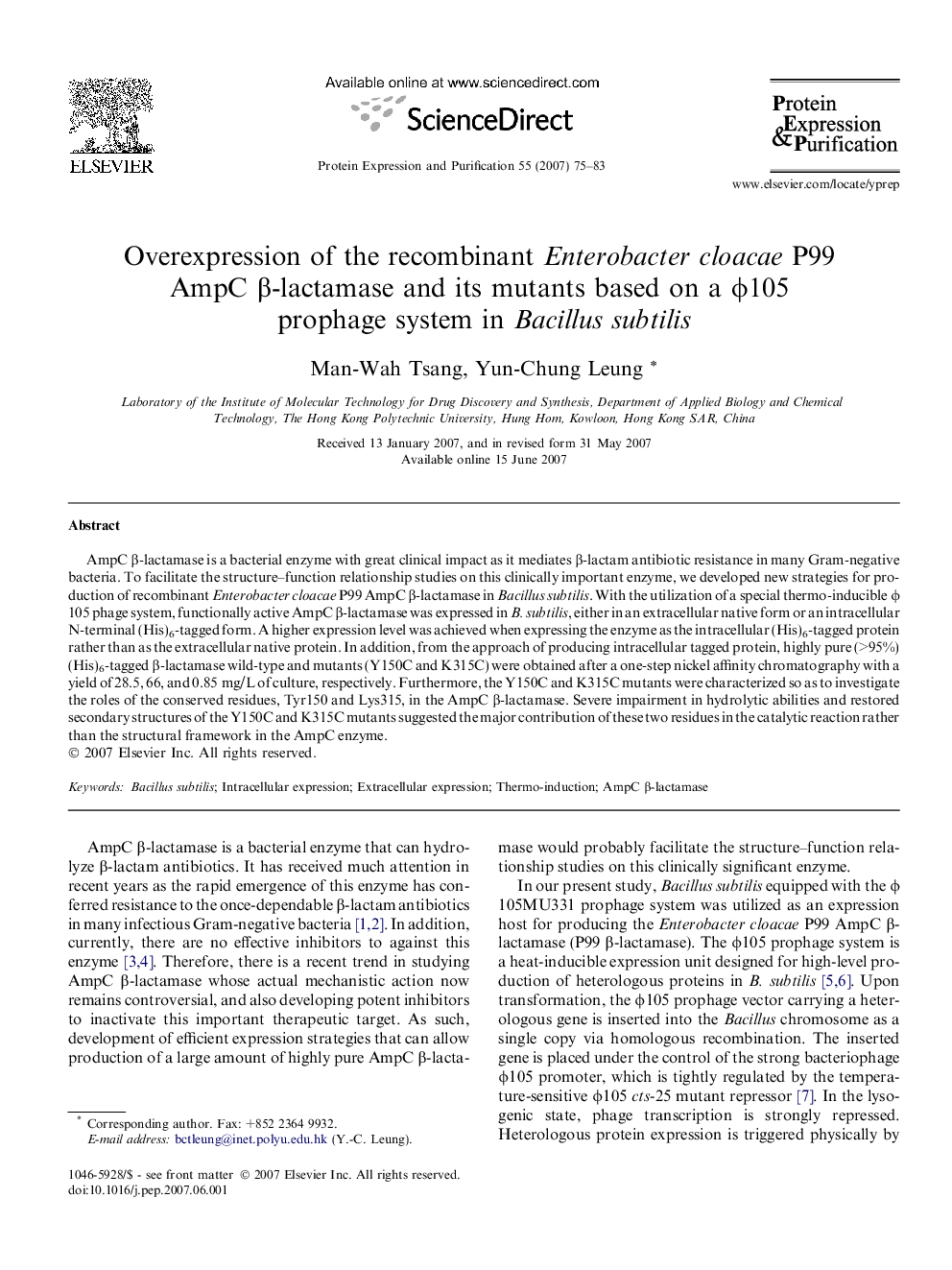| Article ID | Journal | Published Year | Pages | File Type |
|---|---|---|---|---|
| 2021872 | Protein Expression and Purification | 2007 | 9 Pages |
Abstract
AmpC β-lactamase is a bacterial enzyme with great clinical impact as it mediates β-lactam antibiotic resistance in many Gram-negative bacteria. To facilitate the structure-function relationship studies on this clinically important enzyme, we developed new strategies for production of recombinant Enterobacter cloacae P99 AmpC β-lactamase in Bacillus subtilis. With the utilization of a special thermo-inducible Ï105 phage system, functionally active AmpC β-lactamase was expressed in B. subtilis, either in an extracellular native form or an intracellular N-terminal (His)6-tagged form. A higher expression level was achieved when expressing the enzyme as the intracellular (His)6-tagged protein rather than as the extracellular native protein. In addition, from the approach of producing intracellular tagged protein, highly pure (>95%) (His)6-tagged β-lactamase wild-type and mutants (Y150C and K315C) were obtained after a one-step nickel affinity chromatography with a yield of 28.5, 66, and 0.85 mg/L of culture, respectively. Furthermore, the Y150C and K315C mutants were characterized so as to investigate the roles of the conserved residues, Tyr150 and Lys315, in the AmpC β-lactamase. Severe impairment in hydrolytic abilities and restored secondary structures of the Y150C and K315C mutants suggested the major contribution of these two residues in the catalytic reaction rather than the structural framework in the AmpC enzyme.
Related Topics
Life Sciences
Biochemistry, Genetics and Molecular Biology
Biochemistry
Authors
Man-Wah Tsang, Yun-Chung Leung,
